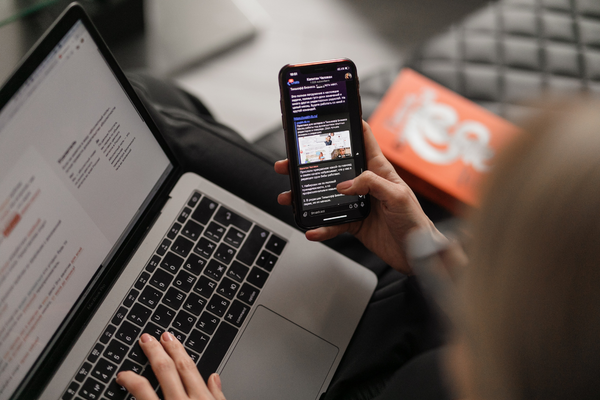Busy timetables, unfinished courses and uninterested employees - these will all be familiar problems if you’ve ever tried to implement an L&D program in the modern workplace.
These days the combination of hectic schedules and short attention spans means that most employees struggle to find the time to learn at all - let alone to take on hours of training material, or to sit through the dreaded afternoon workshop!
More and more organisations are turning to an alternative - microlearning. Microlearning does what it says on the tin - it’s all about short-form, ‘little and often’ doses of training that people can fit around their schedules and absorb more easily.
Here are 5 examples of microlearning methods that businesses are using to get the L&D ball rolling:
1. Microlearning Videos
There’s strong research backing up the effectiveness of video learning versus other forms of training.
Many of us turn to YouTube as our first port of call for any tutorial. There’s a wealth of expert video content out there, but YouTube tutorials have some serious flaws to them.
Because of the YouTube monetisation rules, they rarely cut to the chase, and have a vested interest in padding out the earlier bits of the tutorial with unimportant information.
Most businesses are also not that keen on the idea of their teams spending hours on the platform.
For learners who want to get the information they need straight away from their videos, there are some great video microlearning examples out there:
a. TikTok
It’s not just for dance trends! TikTok’s format is really useful for quick, actionable tutorials. However, some organisations might be wary of getting their team members too hooked!
b. Microlectures
Aka short YouTube tutorials. If you do your research there are some great quick tutorials on YouTube. The hard part as an L&D professional is finding them!
c. Whiteboard tutorials
This genre of YouTube tutorial skips the ‘speaking to the camera’ segment and cuts straight to the content. The most famous example is Khan Academy. One disadvantage of whiteboard tutorials is that they aren’t always short-form.
d. 5Mins
5Mins is a video microlearning platform specifically designed for organizational learning. We have 13,000+ -video micro-lessons and tutorials tutorials which are all under 3 minutes long, cut straight to the point, and contain instantly actionable tips.
2. Microlearning Infographics
‘A picture tells a thousand words’, as the old cliche goes. Certain ideas are so much more easily expressed and absorbed visually - infographics are a great tool to teach key lessons in a much shorter space of time.
Here are some microlearning examples where infographics are a great option:
- Illustrating key statistics
- Suggesting creative and design ideas
- Expressing geographical data
- Demonstrating hierarchies and business structures
- Illustrating flows and step-by-step processes
3. Performance Support and Targeted Microlearning
One of the best use cases for microlearning is for specific and targeted learning - especially when employees have individual needs that need addressing.
Many managers find short-form, targeted learning especially useful in performance management. When an employee seems to be struggling, easy and straight-to-the-point advice is very valuable.
4. Microcopy for Learning Programs
As ‘micro’ as it gets - microcopy is the term used to describe all of the little bits of copy you write to help people understand things. It’s a term most commonly used by UX pros and web designers, but it can also be applicable to designing L&D programs.
For L&D professionals microcopy is what makes up the small but crucial messages your employees receive within their L&D materials. This may sound trivial, but it’s vital for establishing assurance in your learning audience.
Some examples of microcopy within a workplace learning context are:
a. Email subject lines
Getting your teams to learn starts with getting them to see the value of doing so - a well-written subject line should really express the value that your L&D program could have for your people.
b. Headers and Course Titles
When designing your courses, ensure that headers and titles are both clear and engaging. Aim for something that grabs your people’s attention, and leaves them interested in learning more, while retaining complete clarity.
c. Tips, hints and FAQs
If you’re writing your own training materials, adding side notes and pointers can be a great way to get the core ideas across to your learner
5. Gamified Microlearning
Studies have shown that adding gamification to the learning process increases learner satisfaction and builds team chemistry.
Microlearning is especially suited to games and competitions - it’s much easier and quicker to win rewards, climb the leaderboard or see the impact of your learning.
Some ways to add gamified microlearning to your L&D plan:
a. Quizzes
Quizzes are a fun and effective way to consolidate your knowledge. It’s so easy to let training go in one ear and out the other - adding a short test of knowledge after training will go a long way in helping people to retain that information.
b. Leaderboards and Competitions
One of the quickest ways you can get people engaged in learning is to get some competition going. Everyone likes to beat their mates in a competition.
c. Incentives & Prizes
Sometimes leaderboards aren’t enough on their own - businesses that set monthly learning targets with prizes and recognition see fantastic results! Examples of prizes might include vouchers, fun gifts or charity donations.
Conclusion
These 5 microlearning examples should help you to build more engaging and effective organisational learning programs.
The 5Mins learning platform is designed to make it super easy to integrate these microlearning techniques into your employees’ daily learning. Our AI-curated daily microlessons cut straight to actionable advice, and our leaderboards and sharing features make it easy to gamify the learning process and build social learning across your organisation.
Sound interesting? Let's have a chat.




